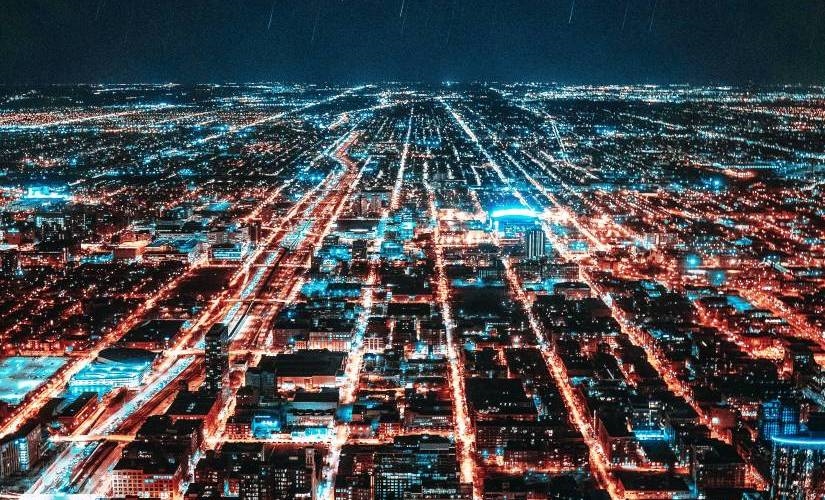Surveillance at the Heart of Smart Cities
Surveillance at the Heart of Smart Cities

These technologies will help with a myriad of everyday city demands, in addition to more intricate challenges pertaining to security, healthcare, mobility, energy and economic development.
We need accurate insights into cities like never before.
With more than half of the world’s population residing in cities, this need for smarter and more accurate insights into their everyday workings is monumental. City management officials could learn much from leaders like Cisco, Amazon and Google. These companies have made it their business to not just collect data, but utilize it to improve livelihoods and communities. As we look to their successes, it becomes increasingly evident that the answer to creating smarter cities lies largely in surveillance technology that captures data analytics.
With the rise in surveillance technology and predictive analytics, we can make smart cities smarter and effectively, increase their efficiency. The reality is, however, that connectivity is never a guarantee. Therefore, necessary data must be present, regardless of connectedness, to ensure real-time decisions can be made. Satisfactory amounts of local storage must exist to position the most perceptive data nearest to the point of compute. This speaks to the increasing importance of the edge, as well as embedded storage.
Growth in real-time data is causing a shift in digital storage needs.
The growth of real-time data though edge analytics is causing a shift in the type of digital storage cities need. Fast, uncompromised access to data is becoming ever more critical. With a recent study, Data Age 2025: The Digitization of the World from Edge to Core, estimating that 175 zettabytes of data will be generated by 2025, there has never been a greater volume of insights at our fingertips and cities must step up to develop ways to use this data for good. In many ways, cities are already doing this – from intelligent street lights optimizing routes based on traffic patterns to reduce emergency response time by 20 to 30 percent, to advanced surveillance cameras with analytics deployed to enhance security operations, leading to a reduction in crime by 30 to 40 percent. However, we can do so much more.
To be a true smart city today, cities will need an “edge tier” approach to store, filter and manage data closer to the sensors. To gain deeper insights, the data is then stored and analyzed for longer periods of time in the edge domain as well as in the cloud or backend. Edge analytics that capture and collect data on network video recorders (NVRs) make it possible to act in real-time. With this technology, cities can find missing persons, notify residents of nearby emergencies and send out traffic congestion warnings.
Data insights will provide many wide-ranging benefits to cities.
The opportunities data analysis and data-driven urban improvement present are both hugely exciting and impossible to ignore. Behavioral analytics, thermal cameras and AI engines in edge devices like NVRs are just a sampling of the technologies that have given us the ability to remain constantly connected on a vast network. By horizontally interrelating individual systems, we can now develop insights into various mechanisms. This includes patterns in electricity, water, sanitation, transportation, environmental monitoring and weather intelligence.
West Hollywood’s Innovation Division is an excellent example to look to.
Take for instance, West Hollywood’s Innovation Division, which recently received the American Planning Association (APA) Technology Division’s Smart Cities Award for the “WeHo Smart City” Strategic Plan. Its three-part plan consisted of strategies including:
- Data-driven decision-making rolling out to departments citywide
- Collaboration and experimentation designed to enable City Hall staff to work better together.
- Automation of processes to improve public safety and manage the built environment through smart city sensors and smart building programs.
With data collected from predictive analytics based on Deep Learning activities in the back-end, in some cases for over a year, we can pre-identify trends to manage incidents in one sector that directly impact another.
Access to real-time data and surveillance tech is key.
Cities need data in the moment and on the go. This places a larger demand on the edge to produce the predictive and reliable information required, often in real-time. In fact, reports (Seagate) predict that due to the infusion of data into our city workflows and personal streams of life, nearly 30 percent of the “Global Datasphere” — meaning the amount of data created, captured or replicated across the globe – will be in real-time by 2025.
That’s a lot of real-time data. So, how can a city implement surveillance technology to better secure a city and enable smarter analyses? The first step is identifying video storage solutions positioned at the center of a smart city’s surveillance application. These solutions enable recordings, data retention, predictive analytics and real-time alerts. The next step is to position data at the edge and provide ample time for cities to make sense of patterns. More than ever before, cities will need to come together to integrate their technologies and ultimately make their networks smarter. This is a challenge that will require broad cooperation across its systems. Surveillance storage technology is the foundation to this strategy, ensuring timely data access and availability from edge to cloud.
The post Surveillance at the Heart of Smart Cities appeared first on ReadWrite.
(24)


